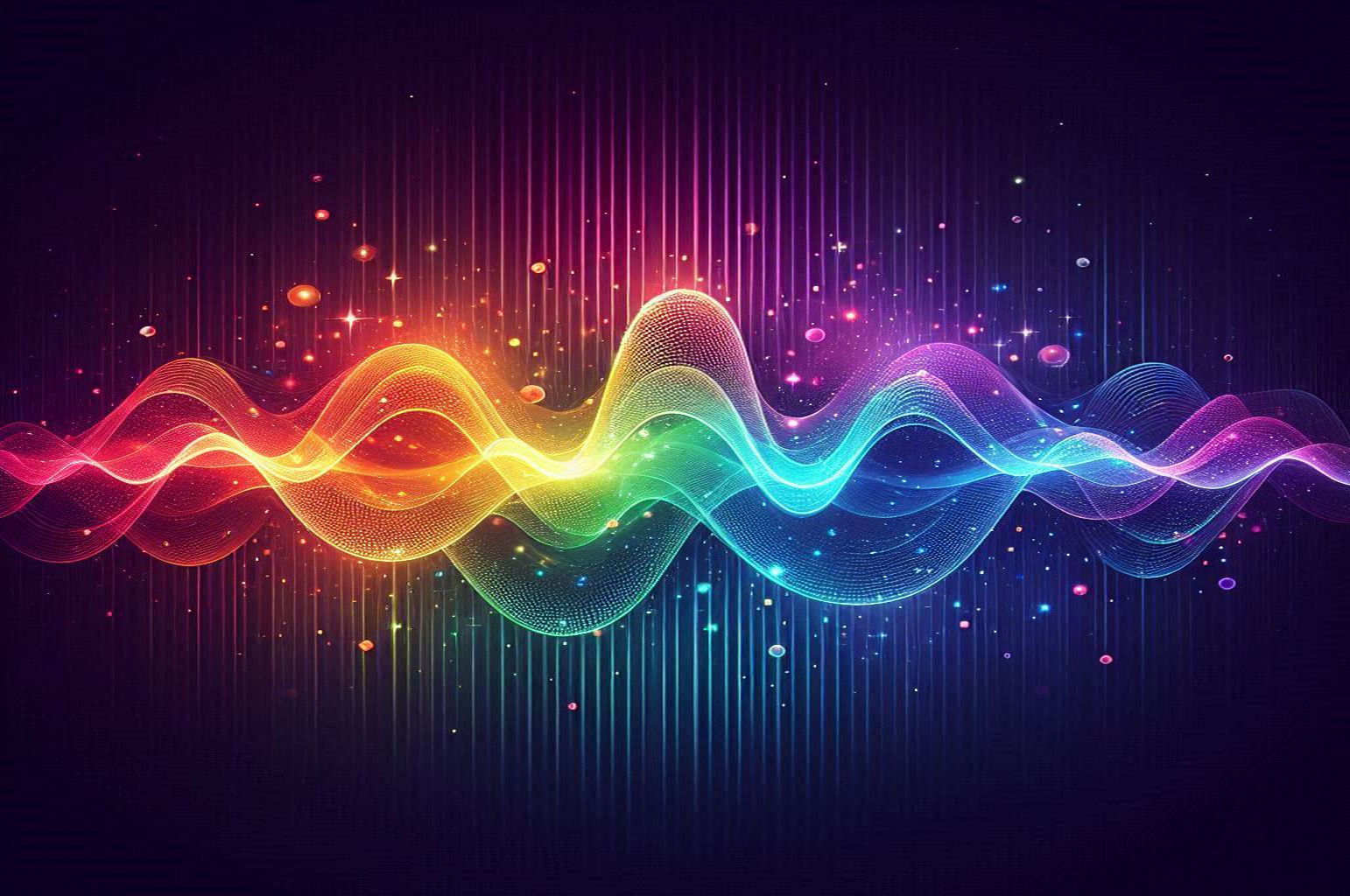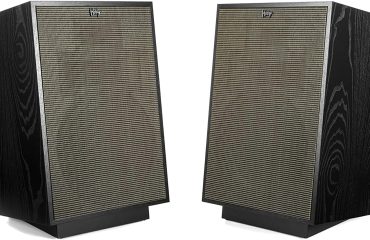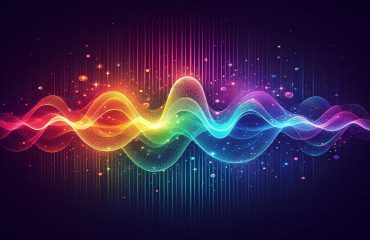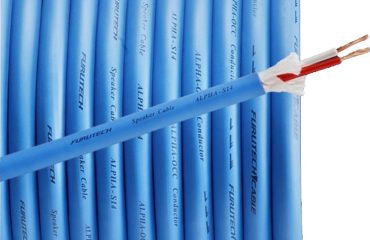Part Two:
Welcome to My World
(NOTE: This section and the ones linked to it are excerpts from Gerard Rejskind’s best-selling book, The World of High Fidelity)
 If you’re reading this, it is more than likely you already have at the very least a notion of the existence of high fidelity. That makes you an exception. The vast majority of people — possibly over 99% — don’t have much idea of what high fidelity is. They may recognize the word “hi-fi” (usually preceded by an article, as in “I bought a new hi-fi”), but they wouldn’t be able to define the word. And there’s a good reason for this. They have never heard high fidelity. Indeed, 99% of that 99% never will!
If you’re reading this, it is more than likely you already have at the very least a notion of the existence of high fidelity. That makes you an exception. The vast majority of people — possibly over 99% — don’t have much idea of what high fidelity is. They may recognize the word “hi-fi” (usually preceded by an article, as in “I bought a new hi-fi”), but they wouldn’t be able to define the word. And there’s a good reason for this. They have never heard high fidelity. Indeed, 99% of that 99% never will!
It’s not clear why it should be so. Genuine high fidelity can change your life, something that can’t be said of very many other consumer products. How many people actually enjoy real music? Thirty percent? Forty percent? So why is it that less than 1% of the population know about high fidelity?
In a later chapter, I shall return to this question. Perhaps we can put our heads together and sway the statistics a little.
Hi-fi: what is it?
Amazingly enough, a number of people still claim paternity to the term “high fidelity.” In fact, the term is so old that anyone still around to tell the tale can’t possibly be its originator.
We have long been impressed — perhaps a little too impressed — with our ability to reproduce sound convincingly. Those who witnessed the first demonstration of sound reproduction (Thomas Edison reciting Mary Had a Little Lamb into a horn atop a wax cylinder) were struck by what they described as “perfect reproduction.” Perfect? Well, it was the best reproduced sound they had ever heard…indeed the only reproduced sound they had ever heard. Fortunately, engineers set out to improve on perfection, and their descendants are still at it.
At some point, closer to Edison’s day than to our own day, someone coined the phrase high fidelity. I don’t know whether the phrase came complete with a rigorous definition, but that definition was surely born not long after. High fidelity was the closest possible approach to the original sound.
That wasn’t all, of course. Engineers like to measure things, and so they set out a number of parameters, and by the 1950’s these parameters were in such common use they were actually printed on record sleeves. Though I shall propose a slightly different definition, let us look at the one that has stood us in good stead for so long. High fidelity has the following characteristics:
(a) Wide frequency range. At one time, the range of human hearing was considered to be from 50 Hz to 15 kHz, and so recordings and playback equipment had to be able to reproduce that range of frequencies. As technical progress continued, the range was redefined as 20 Hz to 20 kHz, and that is pretty much where it remains today. It is interesting to note that few systems even today can achieve this, and for good reason. The requirement was not merely that a system be able to make sound at all frequencies between those limits, but that it be able to reproduce sound at any of those frequencies without either exaggerating or diminishing it. This is, let us recognize it, an ideal.
(b) Wide dynamic range. Dynamic range actually has more than one sense, as we shall see later, and even in the basic definition of high fidelity it took on one of two meanings, or sometimes both at once. Hi-fi equipment needed to have low noise, so that there could be a maximum of difference in loudness between the loudest sound the system could reproduce, and the ever-present background noise. At the same time, high fidelity recordings were to be made without compression (without changing the levels to compensate for loud and soft passages), so that the dynamic (loud-soft) range of the original music could be preserved. This is seldom done.
(c) Low noise. This is a factor in dynamic range, naturally, but the specification is often rated separately.
(d) Low distortion. In the broadest sense, distortion is any alteration of the original signal. That’s too stringent a definition to be useful, however, because even the best system available today alters the signal in every conceivable way. In practice, then, manufacturers have traditionally concentrated on two common forms of distortion: harmonic distortion (also known as THD) and inter modulation distortion (abbreviated IM). These terms are defined in the last chapter in this book. With the years a curious thing has happened. Modern equipment has distortion ratings that are breathtakingly low, totalling a few thousandths of a percent. And yet many systems with impressive hi-fi credentials can sometimes exhibit as much as 80% distortion. How can this be?
As we shall see in later chapters, the claims made on specification sheets don’t always have much to do with what you can expect to hear when you put on your favorite recording.
(e) Power. This is a key specification when you’re shopping for an amplifier. (It is pure fantasy when you’re looking at speakers however.) Amplifier power was once whatever the advertising department thought it should be. There are now strict laws covering power ratings in home equipment (though not in portable gear or car systems). But then, as we shall see in the chapter on amplifiers, even scrupulously honest power ratings have only an indirect connection with how loud an amplifier sounds.
Toward a better definition
All these technical criteria for high fidelity have done little to attract new members to the audiophile club. The public perception is that you need to be interested in electronics to get into high fidelity, and that you have to know how to solder (the unspoken corollary: you have to be male). Even worse, audiophiles are often accused of caring more about sound than about music. There is a grain of truth in all of this.
But only a grain. It once was important to be technically savvy in order to enjoy genuine hi-fi, and even today there are a number of people who listen to the equipment and not to the music. Speaking for myself, I know both how to solder and how to design equipment. Though this is handy for what I do in life, it is not necessary to enjoy high fidelity. Nor do I put sound ahead of music. It says a lot that I collect records by the great conductor, Arturo Toscanini, who made his last recording (in mono!) in 1954. Perfectly reproduced boring music is perfectly…boring.
And so I prefer to define high fidelity not in terms of technical specifications, but in terms of music.
A high fidelity system will, to as great an extent as is technically possible, preserve the values that make great music what it is: moving, exciting, everything we seek it out for. Those values include melody, harmony and rhythm, but that’s not an exhaustive list.
Some of the factors are a mystery. Why is it that a live concert can grab and hold all of our attention, whereas a recording seldom can? What is it that can pull you into a recording so that you put down whatever else you are doing? What causes the chills, the goosebumps that music can generate? I can only guess at them, and in this book I shall have occasion to do exactly that. What I do know is that the difference in musical involvement between one system and another can be huge. Surprisingly, perhaps, it is only indirectly related to cost. The best systems do cost a lot, to be sure, but some surprisingly affordable systems can deliver much of what we need music for. In this book, I shall try to help you put together such a system, and then build it up so that it gets even better.
What hi-fi can do for you
Most people don’t really listen to music. Perhaps that is because music has become so omnipresent, pouring from speakers in the kitchen, the car, the supermarket and the elevator. Listening to it would be like a fish paying attention to water. For background listening, of course, most moderately-priced systems are perfectly adequate, and unless they suffer from fearsome noises or really gross distortion, they can fill the void more than adequately. Though some such systems are falsely labelled “hi-fi,” they are in fact what most audiophiles call “mid-fi”…a polite label that reserves the name “low-fi” for the telephone. They do not invite close listening. Indeed, it is difficult to listen to one without getting the urge to read or indulge in some other activity. Because the musical values, which are the carrier of music’s emotional message, are not transmitted, the music cannot accomplish whatever the composer and musicians had in mind. This is true not only of complex music, such as classical, but of all music. A rock band that would get you dancing in the aisles at a concert may not even make your foot tap when played through a mid-fi system. It is as though there were a filter to take out anything interesting. And in a sense there is.
High fidelity leaves out the filter.
Even a minimally competent high fidelity system can transmit the basic musical values of a recording. You will be able to follow the melody. You will feel the beat. You will perceive the harmonic structure of even dense orchestral pieces. And if the recording contains music that appeals to your soul, you will feel some of what you would have felt if the musicians had been there in front of you.
As you might expect, this is not entirely unrelated to the questions of frequency response, distortion and all the rest of the technical stuff, but any technical analysis is necessarily incomplete. Some systems, despite easily measurable flaws in technical performance, do nevertheless manage to make sounds that strongly resemble real music. At the same time, some components with awesome performance on technical tests are nearly unlistenable.
In this book I shall try to explain why.
Hi-fi…for whom?
I am the first to recognize that high fidelity is not for everyone. Probably 70% of people are lukewarm to music, and wouldn’t use it as anything but a background even if the Vienna Philharmonic and the Rolling Stones were on their payroll. That leaves 30% of potential audiophiles.
And I don’t mean just people who will buy the products that we talk about in magazines like UHF. I mean people whose quality of life will be vastly enhanced by the presence of a high fidelity system. I mean people who will use such a system to discover a world of music that had until then been virtually inaccessible. I mean people who would give up their sofas and their TV sets before they would abandon their hi-fi systems. I mean people whose lives will be changed completely by hi-fi.
Hi-fi is expensive, but it need not break your budget. It takes up space, but it need not force you to dump all your other furniture, nor turn your living room into an electronics workshop. It demands a certain level of dedication, but it doesn’t require an electronics degree to operate. It will probably fill a surprisingly large amount of your time (that’s its purpose) but you need not become a fanatic.
The problem
If all you needed to do was look up “hi-fi” in the Yellow Pages and go and get a system, there would be no need for this book. In fact there are tremendous barriers to high fidelity. Most of the merchants claiming to sell hi-fi wouldn’t recognize it if the RCA dog bit them on the ankle. They have never heard it themselves, and they don’t care whether you ever do or not. They will try to sell you boxes, some of them cheap. some of them expensive, bearing famous names. Most of it will not be hi-fi equipment.
To find true hi-fi, you will need to visit a different kind of store. You will need to let your ears guide you. You will need to beware of technical arguments which are not backed by demonstrations that seduce you with music. You will need to avoid being seduced by what equipment looks like, and concentrate on the only important aspect.
How it sounds.
If you’re new to this, don’t worry, I’ll follow along and help out. But even if you’re already an old hi-fi hand, you’ll find things in this book which are likely to astonish you.
Which is fine. I’ll invite you to check out everything I say for yourself. Once you’ve done that, you’ll skate around the thousand and one traps of high fidelity.






